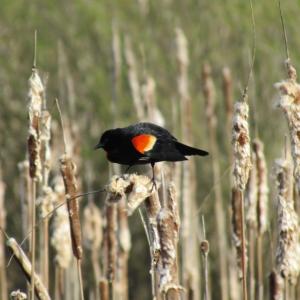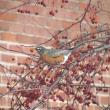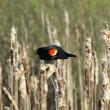The Birders’ Mardis Gras
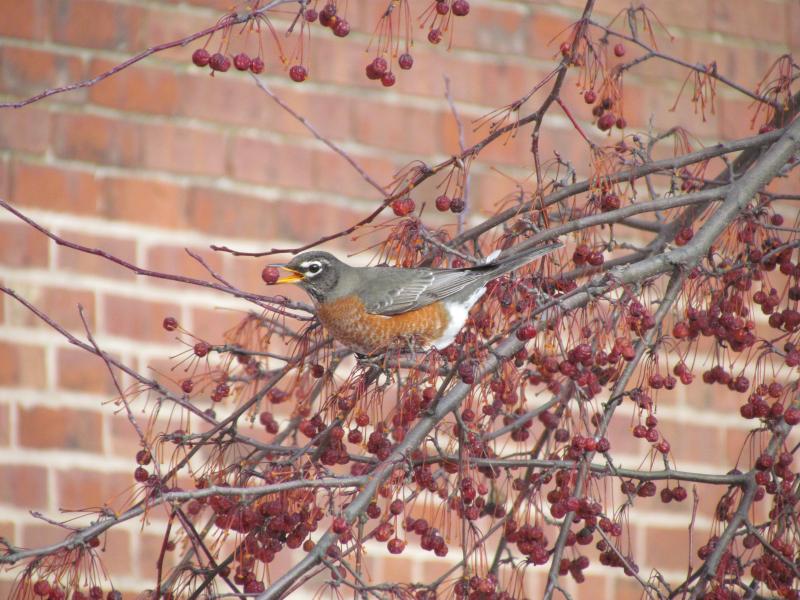 American robins have been plentiful in our area in recent weeks. What will the Great Backyard Bird Count tell us about the species’ broader distribution this winter? Courtesy of Allison Wells
American robins have been plentiful in our area in recent weeks. What will the Great Backyard Bird Count tell us about the species’ broader distribution this winter? Courtesy of Allison Wells
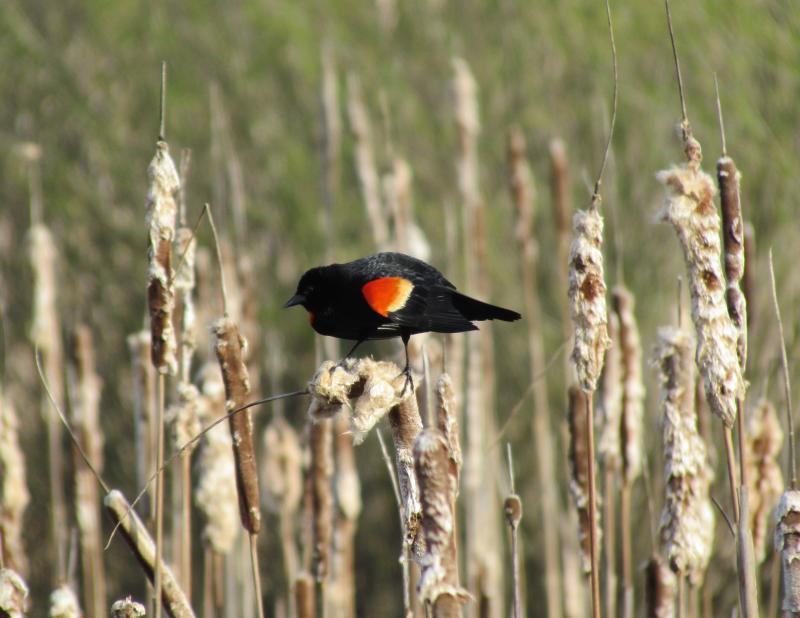 Red-winged blackbirds are among the earliest migrants to return. The Great Backyard Bird Count will tell us how many have begun to arrive back here in Maine. Courtesy of Jeff Wells
Red-winged blackbirds are among the earliest migrants to return. The Great Backyard Bird Count will tell us how many have begun to arrive back here in Maine. Courtesy of Jeff Wells
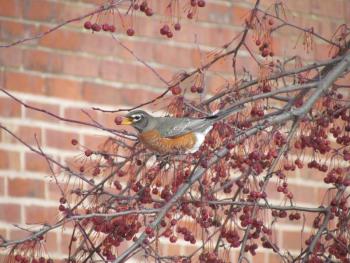 American robins have been plentiful in our area in recent weeks. What will the Great Backyard Bird Count tell us about the species’ broader distribution this winter? Courtesy of Allison Wells
American robins have been plentiful in our area in recent weeks. What will the Great Backyard Bird Count tell us about the species’ broader distribution this winter? Courtesy of Allison Wells
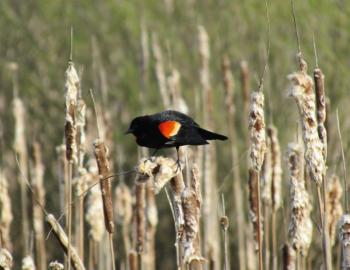 Red-winged blackbirds are among the earliest migrants to return. The Great Backyard Bird Count will tell us how many have begun to arrive back here in Maine. Courtesy of Jeff Wells
Red-winged blackbirds are among the earliest migrants to return. The Great Backyard Bird Count will tell us how many have begun to arrive back here in Maine. Courtesy of Jeff Wells
The Birders’ Mardi Gras
The tradition of a February celebration has long been part of human history. A Carnival period, often in July, is a major tradition in many parts of the world, and New Orleans is famous for its Mardi Gras part of the February festivities. There are various religious connotations to many of these February celebrations, but whatever the reasons to celebrate, there is no doubt that they bring joy and light to lots of people during the last dark days of winter in the northern half of the world.
Here in the North, we bird watchers can also feel the February blahs. But luckily, we have our own “Mardi Gras” equivalent to look forward to.
It’s called the Great Backyard Bird Count.
This year The Great Backyard Bird Count takes place from Feb 16-19, 2024, and anyone, anywhere in the world can participate. The truth is, you can report birds you see anywhere, not just in your backyard. And it’s super easy. Just go to birdcount.org.
Did you see a few crows while out walking the dog? Add that to the tally! A pair of cardinals at the feeder? Yes, you can count those for Great Backyard Bird Count. How about those mallards down in the harbor or the gulls sitting on the rooftops? Absolutely, they all count!
When you add your bird sightings in to the Great Backyard Bird Count database, you become joined in a global community connecting to birds. Hundreds of thousands of like-minded people participate from more than 190 countries across the world. People in Chile and Argentina and Brazil may count the numbers of barn swallows who have flown south from our area for the winter as they flit across the marshes in the heat of the Southern Hemisphere summer. Bird lovers in Colombia may well tally numbers of some of our beloved summer birds that spend most of the year there—blackburnian warblers, northern waterthrushes, scarlet tanagers—along with the bounty of colorful resident tropical birds.
Down in Florida, fellow counters for the Great Backyard Bird Count might report tree swallows, hermit thrushes, and palm warblers—birds that will be making their way north to us in the coming months. They may record the first purple martins arriving from their Amazonian wintering grounds and the departing sandhill cranes and American white pelicans who are already starting their northward migration.
Here in Maine, the multitude of bird sightings that will come in during the Feb. 16-19, 2024, Great Backyard Bird Count, will provide a snapshot of how the recent days of warm weather may or may not have brought in early migrants. How many spring arrival red-winged blackbirds and common grackles are making an appearance and over what area? How many of the expected wintering birds are still here in numbers—species like American tree sparrow in the backyard or bufflehead in the harbor?
We’ve had a recent influx of robins and cedar waxwings in our neighborhood. The Great Backyard Bird Count will show us whether or not that influx is happening over the entire state or maybe over a broader region.
But only if lots of people participate! Please share your sightings for the “Birders’ Mardi Gras,” otherwise known as the Great Backyard Bird Count, from February 16-19, 2024, at birdcount.org.
Jeffrey V. Wells, Ph.D., is a Fellow of the Cornell Lab of Ornithology and Vice President of Boreal Conservation for National Audubon. Dr. Wells is one of the nation's leading bird experts and conservation biologists. He is a coauthor of the seminal “Birds of Maine” book and author of the “Birder’s Conservation Handbook.” His grandfather, the late John Chase, was a columnist for the Boothbay Register for many years. Allison Childs Wells, formerly of the Cornell Lab of Ornithology, is a senior director at the Natural Resources Council of Maine, a nonprofit membership organization working statewide to protect the nature of Maine. Both are widely published natural history writers and are the authors of the popular books, “Maine’s Favorite Birds” (Tilbury House) and “Birds of Aruba, Bonaire, and Curaçao: A Site and Field Guide,” (Cornell University Press).


